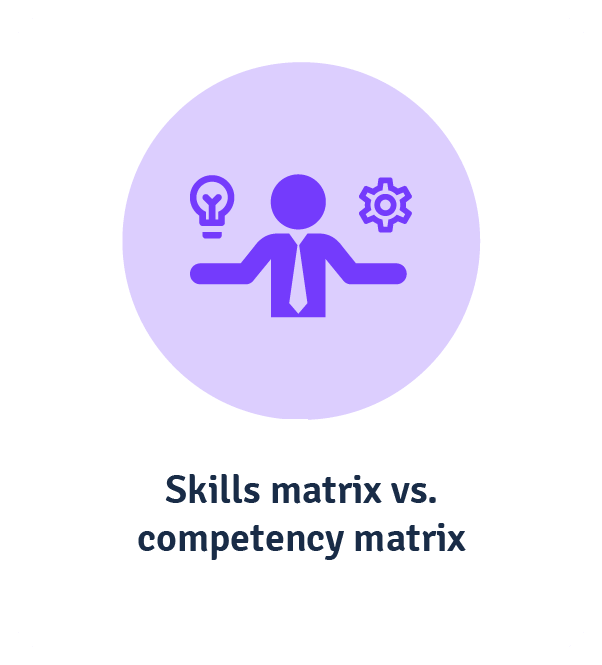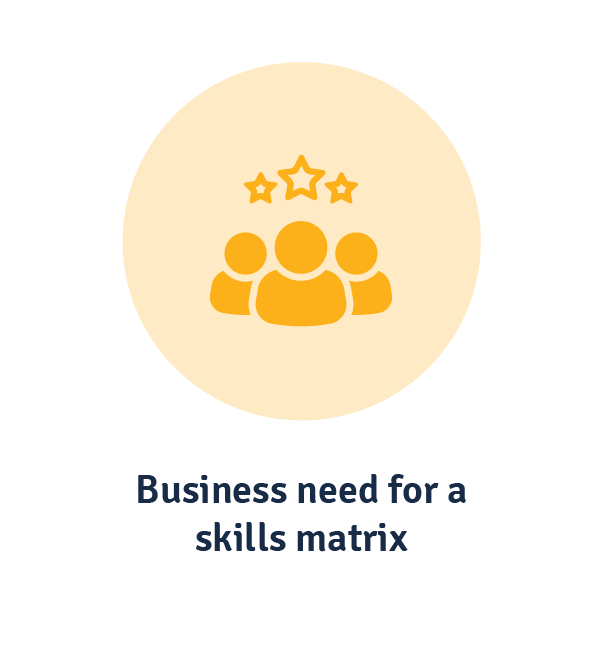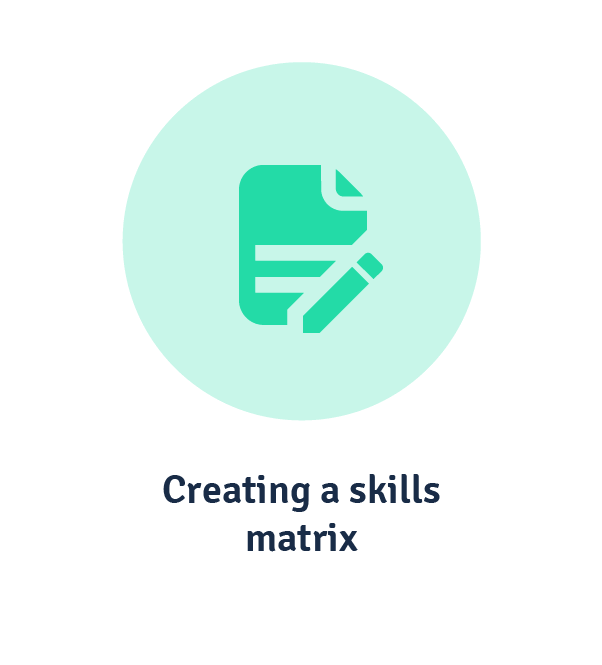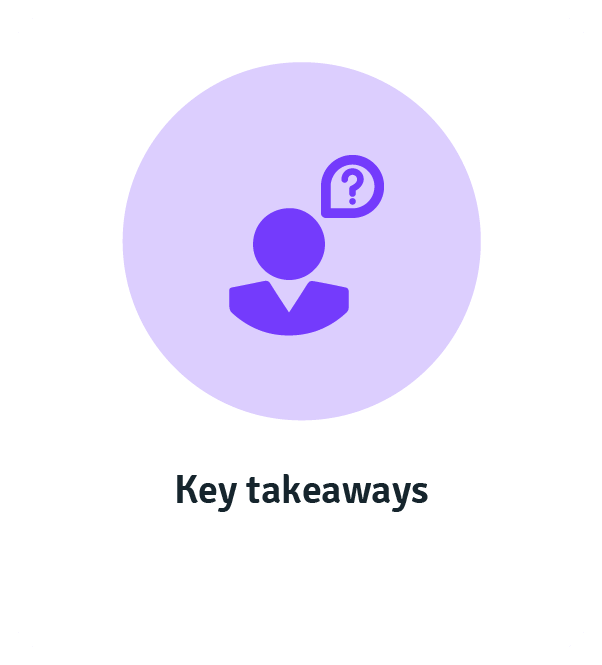What is a Skills Matrix Template and How Can it Help Your Business Thrive?
Whether you’re looking at the talent gaps in your business for workforce planning or are simply just looking to put a team together to work on a new project, you’ll want to know what skills are available to you. This is where you can use a skills matrix template to help you determine what skills your current talent holds, and what missing skills you might need in the future.
What is a skills matrix?
A skills matrix is a tool to help map the existing—and currently non-existent—skills in your workforce. It visualises the skills available, the skills required, and the skills desired for your team or project. The skills matrix is an excellent tool to use in workforce planning and HR analytics as it demonstrates skill gaps in your workforce.
Skills matrix vs. competency matrix: Are they the same thing?
Some would have you think that a skills matrix and competency matrix are one and the same, but that’s not exactly the case. The two are similar, but their uses are slightly different.
A skills matrix—as you can probably guess from the name—is based around your employee’s skills specifically. On the other hand, a competency matrix is broader, evaluating not only an employee’s skills but their knowledge and attitudes too. Think of a competency matrix as encompassing a skills matrix, while a skills matrix is its own entity.
Why a skills matrix is important to your business
The short of it? A skills matrix lets you evaluate what talent you have and what talent you’re missing. It keeps track of your workforce’s available skills and can even provide a boost to productivity and performance.
The skills matrix has a number of outcomes that benefit your organisation and its workforce.
- Identifying the right people
- Identifying gaps in skills and competencies
- Tracking employee development
- Tracking key staff members.
Understanding your available skills feeds (and by extension, your capabilities) is crucial for enabling business performance. That’s why we’ve pioneered the first performance learning management system (PLMS) here at Acorn. It allows companies, governments and other institutions worldwide to consistently align individual growth with business objectives through a performance-oriented learning management system.
Identifying the right people
A skills matrix will lay out the skills and competencies of your workforce, enabling managers to create better and more productive teams, select the right employee to join those teams, and show which employees are the best fit to fill empty positions.
On top of this, because you have a record of the skills and competencies of your entire workforce, you’ll be able to see exactly what competencies you lose when employees leave your company. This makes it easier to find new candidates because you’ll know exactly what skills they need to have in order to fit the role.
Identifying gaps in skills
With your entire workforce’s skills laid out before you, it’s easy to see skills that your team is missing, or that are missing in the broader organisation. You know what skills you’ll need your project teams to have if they’re to complete their project on time, and the data shown in a skills matrix will show you the skills gaps you’ll need to address to create the most effective team for the job.
Track employee development
If you know what skills your workforce has, you’ll also know what skills they’re currently lacking. You can use a matrix to identify possible learning opportunities for your employees and their professional development and training. Employee development is an important factor in closing employee skills gaps and making sure your organisation reaches its ultimate strategic goals.
Track key employees
Using a skills matrix, you’ll be able to find which employees have skillsets of high value to your organisation. You can also track the professional development of your workforce through a skills matrix to ensure they’re on the right track. In other words, a skills matrix is a great way to identify your key employees and the value they bring to your business. And if they bring value to your workforce, you’ll want to make sure they’re keen to stay with you.
Creating a skills matrix for your business
Now that you know what a skills matrix is and how it will help your organisation, you probably want to have a crack at making your own. There are four steps to creating a skills matrix for your team or project:
- Determine the skills needed for a project
- Assess employees’ current skill levels
- Rate employees’ interest in a skill
- Determine what skills are missing.
Step 1: Determine the skills needed
When designing a skills matrix, the first thing you want to do is define which skills are actually required for your project to continue. These will be the skills that you’ll assess your employees on.
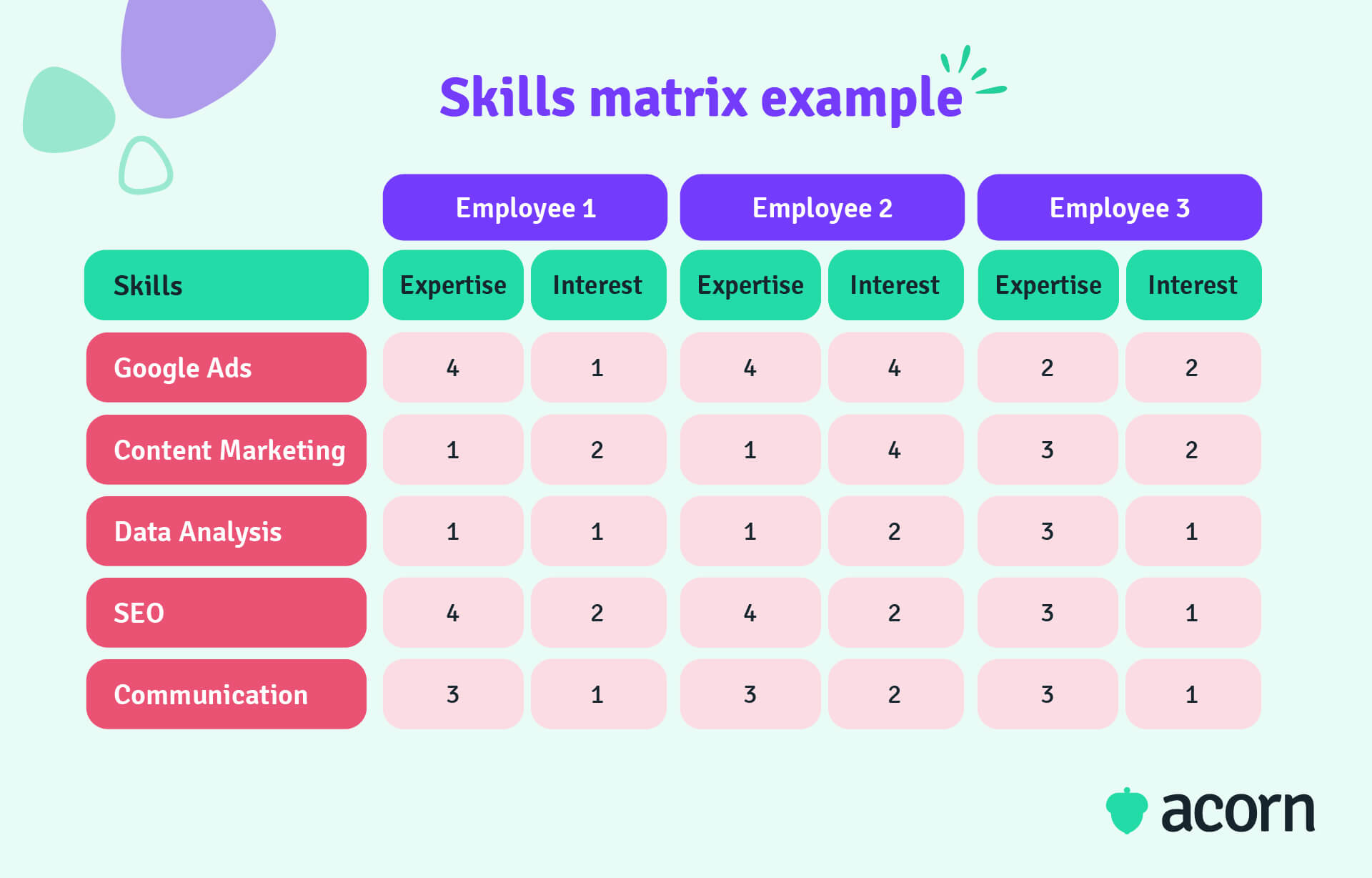
Step 2: Assess employees’ current skill levels
Using the skills collected in step one, you can now assess how competent each of your employees are in each. You may test them for proficiency, get them to rate themselves, or use a combination of both as well as feedback from peers and managers to determine their competency in each skill. You’ll want to record your findings for each of your employees using a clear rating system.
- No competency
- Basic competency
- Intermediate competency
- Advanced competency.
Step 3: Rate employees’ interest
How interested are your employees in using the skills required for the project? You need to rate how interested they are in using a skill they already have or learning a new skill entirely. People learn better and faster if they’re motivatedand making sure your employees are interested in the topic will help keep that motivation up. Mark each individual as either:
- No interest
- Interested.
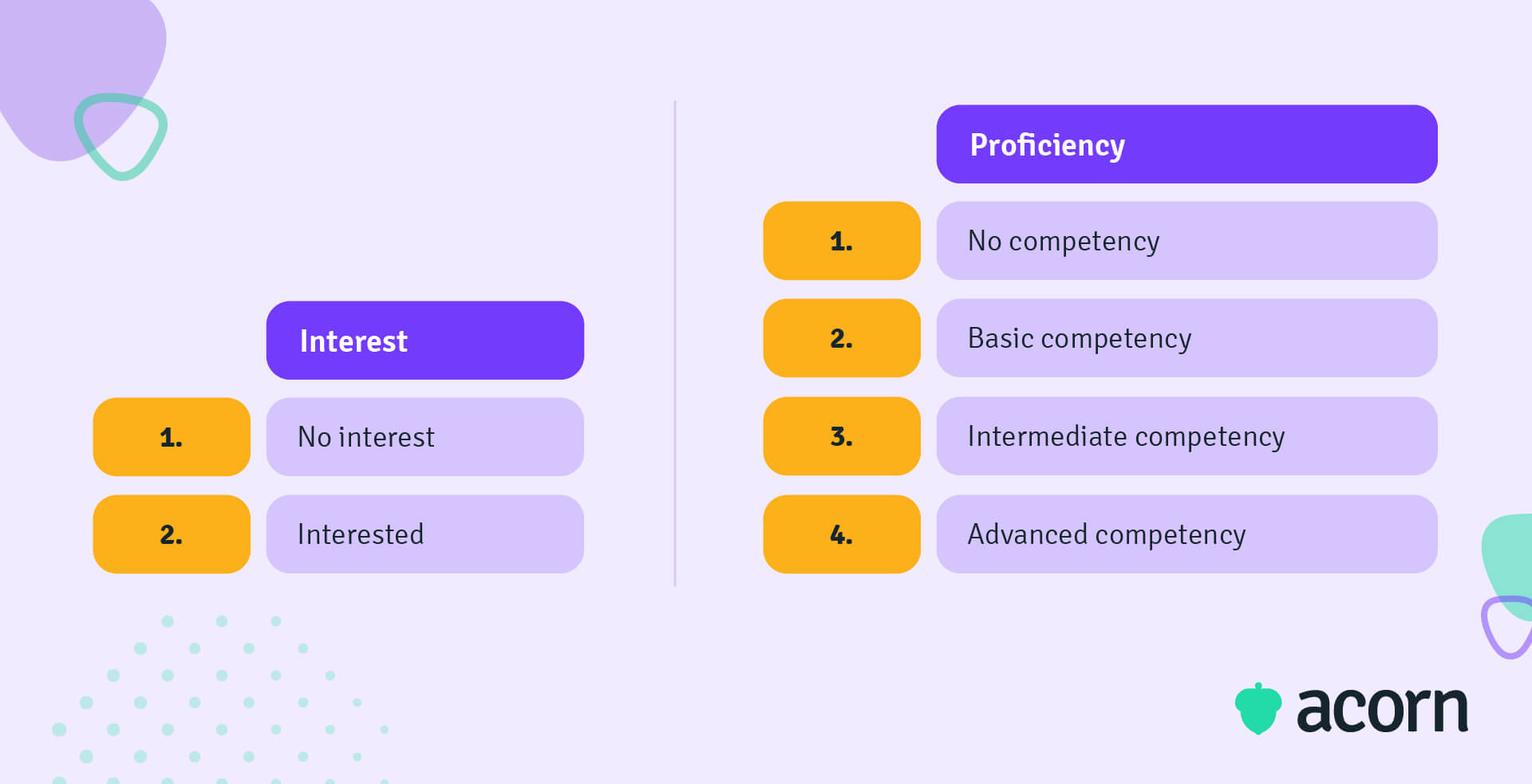
Step 4: Determine missing skills
Now that you have all your required skills listed as well as your employees’ proficiencies in each one recorded, you’ll notice which skills your team are missing. You can use the skills matrix to determine whether to train your team members in these skills or hire new talent to fill the gaps in your workforce.
Do the heavy lifting with a skills matrix template
We’ve already been over how understanding your workforce’s skills using a skills matrix is important not only for immediate short-term projects, but also for your long-term workforce planning. The only problem is that pulling a skills matrix together can be a difficult process to get started.
This is where a skills matrix template can be helpful. A skills matrix template provides you with a visual layout of all the information you need to include in a skills matrix template, reducing some of the stress around recording your skills data.
Skills matrix template example
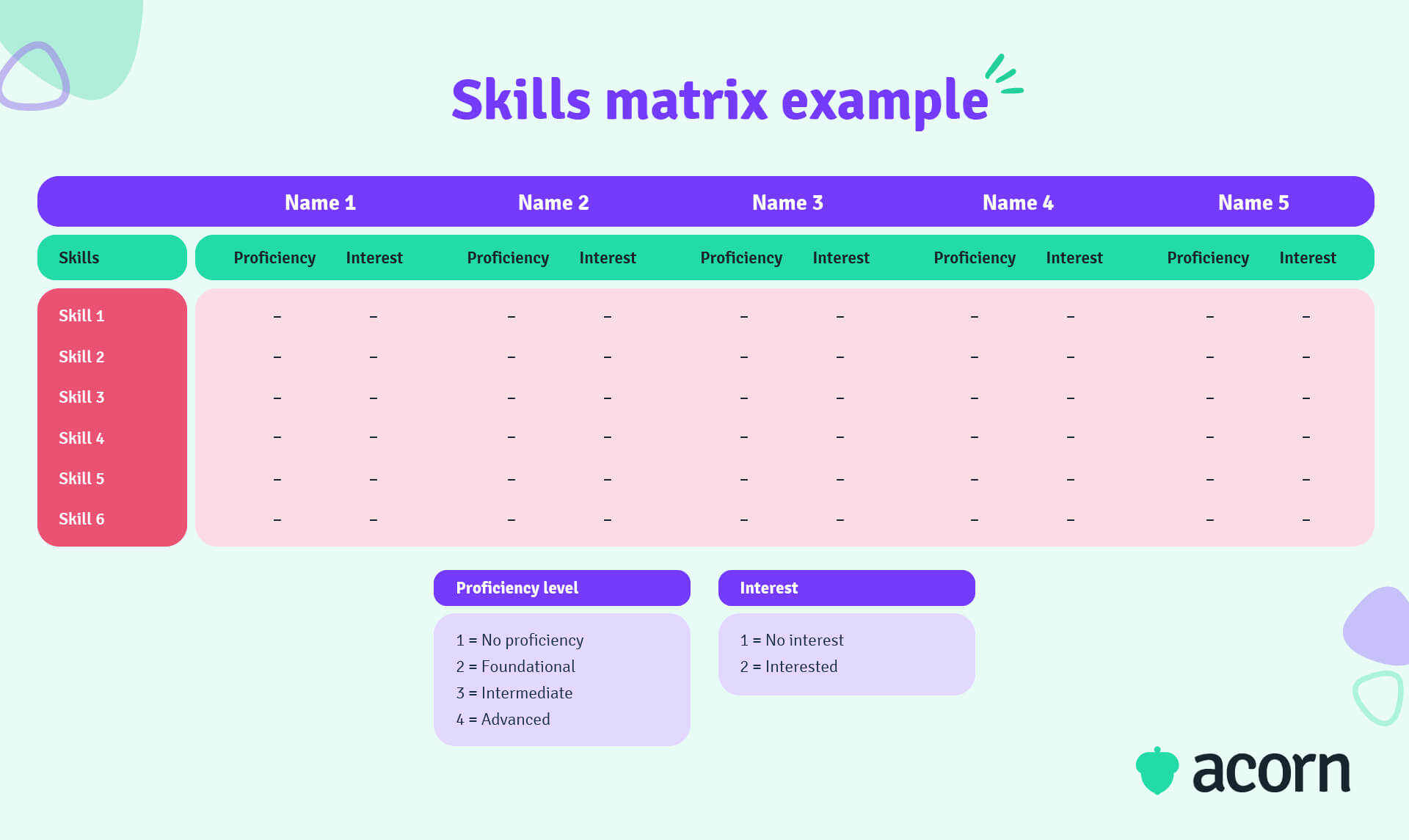
Key takeaways
It can be overwhelming to begin the dive into analysis of the skills your workforce holds, but it pays off with a skills matrix template which helps pull together the best team for the job. A skills matrix not only shows you the capabilities of your current employees, but also works to highlight the areas in which your workforce’s skills are lacking.
Related Reads on This Topic

Capabilities vs Skills: What Exactly Makes Them Different?
Skills refer to the capacity to perform a task, whilst capabilities allow outcomes to be generated. Discover more about their differences…

How to Build a Business Capability Map for Strategic Planning
Learn how to build a business capability map that breaks down your organisation’s unique value chains to support a capability-led strategy…

Why You Need a Competency Model for Organisational Development
Competency models are the mortar to the capability bricks of your business. Discover their benefit for organisational development…

